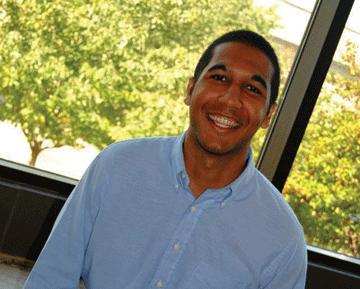
So, what exactly is your background?”
“Both of your parents aren’t Jewish, are they?”
“Wait, so you’re just like a Jewish Barack Obama!”
Growing up as a half-black and half-white person who is also Jewish definitely raised some interesting questions and responses upon “revealing” my identity to my friends.
Of course, none of these responses were meant to be hurtful, but until a few years ago, I still felt awkward and anxious telling my friends and other community members about my background and how it influences my life. {mprestriction ids="1,3"}However, as someone dedicated to learning about diversity and practicing social justice, I have realized that my unique story provides me with the opportunity to thoroughly explore important aspects of the world and to engage the Jewish community in these important conversations.
Originally from Oklahoma City, Oklahoma, I essentially grew up at the local Reform congregation, Temple B’nai Israel. I always participated in Sunday school and the preparation for my Bar Mitzvah came almost naturally to me, but I still didn’t feel a true sense of commitment to Judaism or the Jewish community until my incredible experiences with both Jewish summer camp and the North American Federation of Temple Youth (NFTY), Reform Judaism’s youth movement.
By the time I finished high school, I had spent three summers at URJ Greene Family Camp, a Reform Jewish summer camp in Bruceville, Texas; explored Europe and Israel for five weeks on a NFTY in Israel trip; and enjoyed numerous NFTY events where I created some of the closest relationships and most valuable experiences of my life. After four incredible years of NFTY, during which I served in both local and regional leadership positions, I served as NFTY’s North American president during my freshmen year of college at the University of Kansas (KU). It was a phenomenal year of leadership development, creating educational programs, traveling, event-planning and serving as the face of a thriving youth movement.
All of these experiences have directly impacted my current connection to Judaism and the Jewish community. I am excited to spend my fourth summer at the URJ Kutz Camp in Warwick, New York, where I will coordinate Jewish educational and social programs for 200 Jewish teen participants. I also proudly serve as a trustee on the Union for Reform Judaism’s board and as an intern for KU Hillel, both incredible organizations that provide me with so many opportunities.
While all of my involvement in the Jewish community is an enormous part of my story, I’ve also been exploring my connection to Judaism as someone who also identifies as African-American. Several studies have shown that American Jews are approximately 90 percent white, meaning that a significant part of our community identifies as something other than “the norm.” While I have always felt comfortable in the Jewish community, I have witnessed the inability of some Jews to see my whole self. As someone who identifies as half-black and half-white, I understand how some people in the Jewish community, after asking, “What’s your background?” could move past the fact that I am half-black. It’s possible that even after seeing my skin and learning that I am half-black, they will forget or ignore this important part of my identity.
However, just because I’m Jewish does not mean that I’m not black. While it is certainly not the norm within the Jewish community, it is important detail of who I am today and where I come from. With more and more members of the Jewish community identifying as something other than white, all of us must make the conscious decision to see, learn about, and celebrate the differences that ultimately make our community stronger and more vibrant. If we ignore the differences between us, we risk alienating potential members our community. For some Jews — particularly those who do not identify as white — such dismissal of their individual uniqueness is an enormous barrier.
An important part of our Jewish tradition is the idea that every person is created b’tselem Elohim, in the image of God. We first discover this concept in Genesis 1:27 where “God created man in His image, in the image of God He created him; male and female He created them.” From its first mention in the Torah to today’s many interpretations, the value of -b’tselem Elohim is about honoring both the characteristics that are different between us and the ones we share in common. As the Jewish community continues to evolve and grow in regards to race, we must take this value to heart and know that it is central to hearing, exploring, understanding and exploring the story of each and every person.
Evan Traylor, originally from Edmond, Oklahoma, is a student at the University of Kansas studying political science, Jewish studies and leadership studies. He is currently an intern at the University of Kansas Hillel, a member of the Union for Reform Judaism’s Board of Trustees, and a regular contributor to the Jewish Multiracial Network. This article originally appeared on ReformJudaism.org.{/mprestriction}